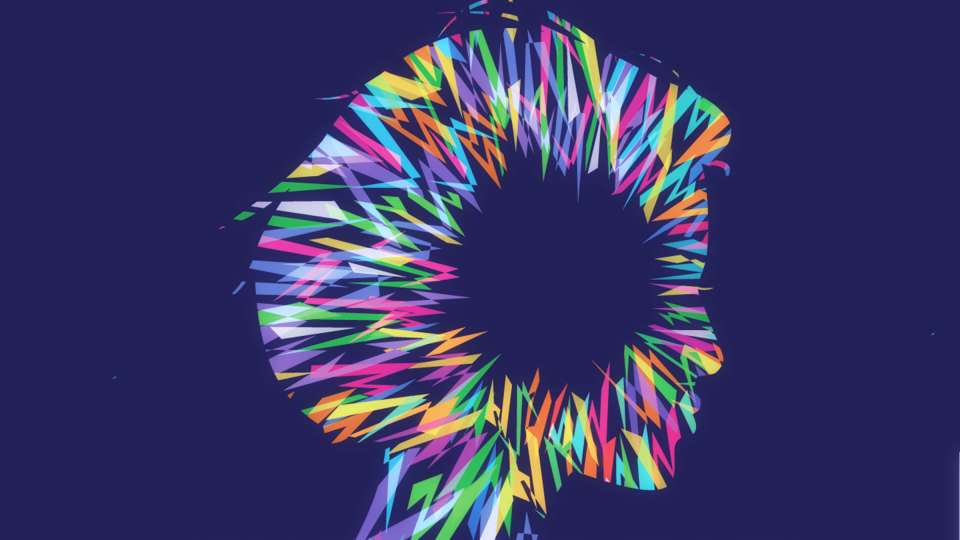
Double rainbow all across the sky? More like double rainbow zigzagging across your vision.
More than 60 million Americans experience migraine, with about 20 percent experiencing migraine with aura. Migraine with aura involves recurrent headaches accompanied by vision changes (e.g., bright lights or zigzag lines), sensory disturbances (e.g., tingling), difficulty with speech and other neurologic symptoms.
But is it possible to have a migraine aura without headache? And how do you know it’s not something more concerning, such as stroke or other neurologic condition?
Yes, you can have migraine aura without headache
A migraine without a headache is colloquially called a silent migraine and medically called acephalgic migraine or migraine aura without headache.
A migraine aura without headache is characterized by sensory symptoms, most often including an evolving visual disturbance (e.g., the zigzag rainbow across your vision). An aura disturbance episode typically lasts five to 60 minutes.
“Migraine aura without headache often occurs in individuals who also have a history of migraine without aura. However, some individuals may have only migraine aura without headache,” says Dr. Natalia Murinova, director of the Headache Clinic at UW Medical Center – Roosevelt.
The other common diagnosis for a migraine without a headache is a vestibular migraine, she says. A vestibular migraine is characterized by dizziness with or (in these cases) without a headache. These migraines can feel like rocking, swaying and lightheadedness, which in turn can cause nausea and vomiting.
However, other conditions can also cause aura and vestibular symptoms, so if you’re experiencing those symptoms, it’s important to talk with your doctor instead of diagnosing yourself.
“Migraine aura without headache and vestibular migraine are diagnoses of exclusion. If someone is developing new neurologic symptoms of a migraine aura without headache, they should be evaluated by a medical provider to confirm the symptoms are not due to a stroke, an eye problem, multiple sclerosis, infection or another neurologic condition,” Murinova says. “A lot of other diagnoses can cause dizziness, so you need to be evaluated by a medical provider for further workup.”
Stress and anxiety can increase the risk of a migraine attack
Migraines occur when you have neuron hyperexcitability; this is when the neurons in the brain are overactivated. This hyperexcitability is what causes you to have visual aura, dizziness and other migraine symptoms.
So, what pushes your brain into this state?
“It’s a cumulation of multiple factors, including genetics and environmental stressors, such as changes in sleep pattern, mood disorders, hormonal fluctuations and others,” says Dr. Ami Cuneo, a neurologist at the Headache Clinic at UW Medical Center – Roosevelt.
“Just one night of poor sleep can increase a patient’s likelihood of having a migraine attack,” Murinova says. “Hormonal fluctuations, high-sugar foods and alcohol can also increase your chances of developing a migraine episode. You’re too hot or cold; hungry or thirsty; you didn’t sleep; you have a disrupted circadian rhythm. Your brain’s operating system may decide to activate the migraine alarm.”
The difference between a visual migraine aura and a stroke
Aura symptoms can be easily mistaken for stroke and other neurologic conditions. If you develop these symptoms for the first time (aka you don’t have a history of migraines or headaches), it might be signs of stroke — and you should seek medical attention immediately.
“Unfortunately, most people need magnetic resonance imaging (MRI) to evaluate for other neurologic conditions, such as stroke. Individuals should be seen by a medical care provider,” Cuneo says.
Younger people with a history of recurrent migraine aura may not need brain imaging; however, if any new neurologic symptoms are present, particularly if a person is older, it’s better to be evaluated by a doctor.
In addition, look out for these key differences between a visual aura and stroke:
- Stroke tends to come on suddenly, while auras tend to build slowly.
- A visual migraine aura can cause blind spots that don’t last long, and they tend to look like flashing lights or rainbow colors that can zigzag. Stroke tends to cause a sustained absence, darkness or loss of vision.
“It’s important to talk to your medical provider. These headaches often involve a change in brain function, rather than a structural problem. We need to make sure you’re not dealing with a headache caused by another condition, and we need to rule out a stroke, transient ischemic attack or other neurologic disease,” Murinova says.
A stroke is a medical emergency. If you believe you or someone you know is having a stroke, call 911 or seek medical attention right away.
Migraine relief is possible
You thought having a migraine was bad enough, and now words like stroke and cancer are being thrown around. It’s scary to think that a visual disturbance might be any of these conditions, but cases of stroke, transient ischemic attack (TIA) and cancer aren’t common in folks under 65. So, talk with your doctor to determine what is going on — and get you the care you need.
If you do have an aura without a headache or vestibular migraine, there’s help available for you, too.
“There is hope for people with migraine. There is never a good time to have a headache, however there are many new treatment options, and people can get better,” Cuneo says.
At the UW Headache Clinic, Murinova and Cuneo use a multimodal approach to treat migraines, including a combination of medication, supplements, lifestyle changes and neuromodulation devices (e.g., Cefaly or gammaCore) that help stimulate your nerves and reduce symptoms. On your own, lifestyle changes such as getting enough sleep, eating well, exercising and reducing stress all also help reduce migraine attacks.
“Try to be kind and accepting of yourself so you can concentrate on healing. It takes some effort on both sides, but there are a lot of new treatments, and we see many people dramatically improve,” Murinova says.

 Healthy ideas for your inbox
Healthy ideas for your inbox





